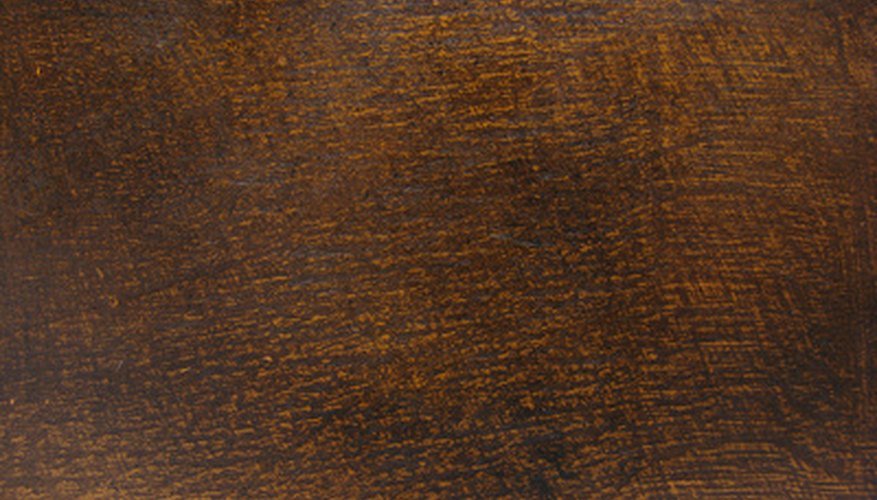A lacquer finish adds a glossy, waterproof sheen to wood. It brings out the beauty of the grain, but it is practical too, protecting the wood from spills and stains. You can apply several coats in a day, as lacquer contains a solvent that quickly evaporates, speeding the drying process. Applying lacquer with a traditional brush often leaves shadowy marks, and using a spray gun sometimes creates a pockmarked surface like orange skin. Use sponge brushes -- cheap foam pads with paintbrush handles -- to apply lacquer instead to achieve a smooth, blemish-free surface.
- A lacquer finish adds a glossy, waterproof sheen to wood.
- Use sponge brushes -- cheap foam pads with paintbrush handles -- to apply lacquer instead to achieve a smooth, blemish-free surface.
Pour enough lacquer into an old tin can to cover the bottom of it to a depth of around 1/8 inch.
Add around 1/8 inch of paint thinner to the can. Stir vigorously with a spoon to make a half-and-half mixture of lacquer and thinner. Do not prepare more lacquer and thinner than this at any one time. The mixture evaporates quickly and gives off noxious fumes, so it makes sense to minimise the amount you use.
Dip a sponge brush into the lacquer mixture. Let the lacquer thoroughly soak into the sponge.
Wipe the sponge brush across the wood, in a sweeping movement, following the direction of the wood grain. The sponge applies the lacquer smoothly, leaving no brush strokes. Try to use as few sweeps of the sponge brush as possible. Overlap each sweep with the previous one a little, but otherwise do not sweep the sponge brush over lacquer you have already applied.
- Dip a sponge brush into the lacquer mixture.
- Wipe the sponge brush across the wood, in a sweeping movement, following the direction of the wood grain.
Continue brushing the lacquer onto the wood, until the whole surface has a single coat. Leave the coat of lacquer to dry. This may take as little as an hour, but it may take longer, as the drying time depends on the temperature of the work area.
Rub the dry, lacquered surface briskly with 220-grit, fine-grade sandpaper. Sweep away the dust with a large, dry-bristled paintbrush, until the surface is completely clear of dust particles. You need to sand and dust the wood, or "rub out the finish," after applying each coat of lacquer, except the final coat.
- Rub the dry, lacquered surface briskly with 220-grit, fine-grade sandpaper.
- You need to sand and dust the wood, or "rub out the finish," after applying each coat of lacquer, except the final coat.
Discard the sponge brush after you have used it to apply one coat. The lacquer and thinner damage and degrade the sponge foam, and a damaged sponge brush will introduce blemishes into the next coat of lacquer you apply.
Apply another coat of lacquer using a fresh sponge brush. To achieve a deep, glossy finish, you will need to apply around six coats, allowing each one to dry fully before applying the next. The more coats you apply, the deeper the sheen you achieve.
TIP
Rub the wood surface with a hand towel after sanding and brushing the lacquer between coats. This helps to get rid of any small scratches left in the finish by the sandpaper. Mop the floor of your work area before using the sponge brush. This removes dust that could otherwise settle on the wet lacquer and spoil it. Water-based cabinet finishes are an alternative to lacquer, if you wish to minimise your exposure to solvent fumes.
WARNING
Apply lacquer in a well-ventilated place, as the solvent fumes are dangerous to inhale. Some states place restrictions on the use of lacquer. Check with the store when you buy the lacquer, to see if you need to take account of state restrictions where you live.
